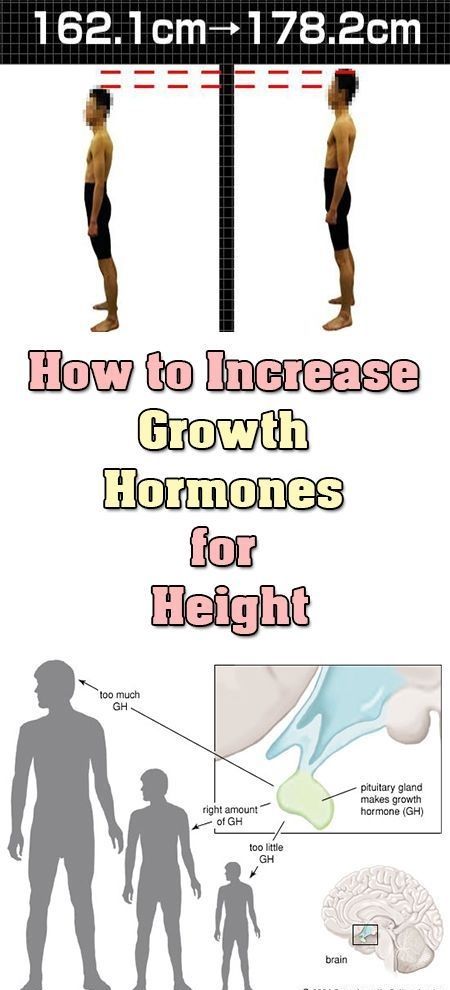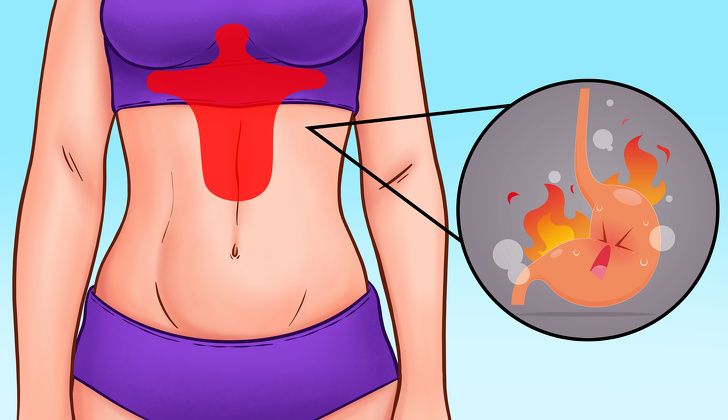When do babies normally turn head down
When Does A Baby Turn Its Head Down?
Home » Pregnancy Concerns » When will my baby turn head down?
As you progress through pregnancy the baby’s position becomes a more important consideration. At about 30 weeks about 25% of babies are not in a “cephalic” (head down) position. It is normal for the baby to turn head down even by about 34 weeks. So don’t worry!
It is a concern if the baby is not head down at 36 weeks and beyond. This does not mean that spontaneous turning will not happen. Indeed occasionally a baby can turn even as late as the onset of labour.
Why are most babies head down?
A singleton baby’s position is related to the size of your baby and the size and shape of your uterus.
In early pregnancy, there is plenty of room for your baby in the uterus and so there is no reason why your baby should be head down. As the pregnancy becomes more advanced there is less room for your baby to move in your uterus and so your baby wants to adopt a more comfortable position. As the buttock area is greater, a more comfortable position is for the buttock area to be at the top (“fundus”) of the uterus and the head to be towards the pelvis.
If your uterus has been overstretched because of previous pregnancies, if you have excessive amniotic fluid (“liquor”) in your uterus or your baby is unusually small then your baby may be quite mobile in advanced pregnancy. We refer to this an “unstable lie”.
If you have an abnormality of the uterus such as a fibroid protruding into your uterine cavity or you have a uterine shape abnormality, or you have an unusual shape to your pelvis then your baby can be prevented for adopting a head down position. If you have twins often one is not head down and sometimes both.
What can be done about it?
There is no need for concern until more advanced pregnancy. The reasons need to be considered as to why your baby is not in a head down position. I will monitor you each visit with an ultrasound scan so we can monitor your baby’s position.
If your baby has been breech and turns to head down spontaneously, then this is a very encouraging sign. It usually then stays head down. If your baby remains breech toward the end of the pregnancy, then there is usually a good reason. A procedure (“external cephalic version“) to try to turn your baby around to head down can be done, but only after a careful ultrasound scan and giving you a medication to relax the uterus. External cephalic version will be done very carefully and with close monitoring on the labour ward/birth unit of your baby and you with the procedure. This is because studies have shown the external cephalic version procedure has risk to your baby’s wellbeing because it can cause an umbilical cord accident, placental separation and preterm labour. Also, it is generally considered that the babies who turn easily with external cephalic version procedures would have turned anyway and the so the procedure was not necessary.
If the lie is unstable and you go into labour or your waters go then you must attend the labour ward/birth unit immediately so your baby’s position and presentation can be checked and umbilical cord presentation/prolapse can be excluded.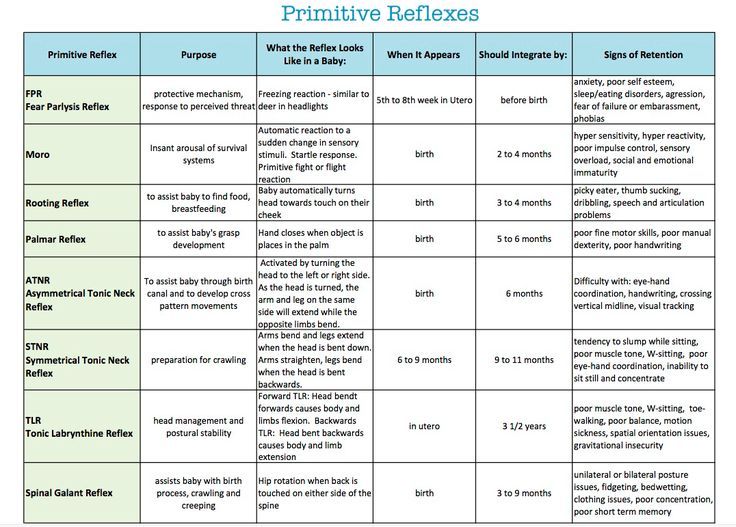 Sometimes with an unstable lie, a careful stabilising induction is a safer option than waiting for spontaneous labour onset.
Sometimes with an unstable lie, a careful stabilising induction is a safer option than waiting for spontaneous labour onset.
Also see my video titled ‘When will my baby turn head down?‘
- Monday all day 9.00am to 4.30pm
- Tuesday all day 9.00am to 4.30pm
- Wednesday all day 9.00am to 4.30pm
- Thursday morning 9.00am to 12.30pm
- Thursday alternate afternoons 2.00pm to 4.30pm
- Friday alternate mornings 9.00am to 1.00pm
- Friday afternoon 2.00pm to 4.30pm
- Saturday mornings 9.30am to 12.00 midday*
*Saturday morning appointments are not available for initial antenatal visit.
Symptoms of Baby Turning Head Down
Your baby kicks, squirms, and flips all day (and night!). But what exactly are they doing in there?
Well, toward the end of your pregnancy, your baby will likely get into a head-down position so that they can begin their descent into the birth canal. The exact timing of when your baby hits this position is individual. And some babies prefer other positions, like breech (head up) or transverse (side lying).
And some babies prefer other positions, like breech (head up) or transverse (side lying).
Regardless, some signs can serve as clues about how baby’s relaxing in there. Here’s more about when your baby will move head down, what the options are if they stay head up or in another position, and what to feel for when trying to determine your baby’s position at home.
Related: What Sleeping Position Will Help Turn My Breech Baby?
Most babies tend to shimmy their way into a cephalic (head-first) presentation before birth.
Fast fact
At 28 weeks, around 25 percent of babies are breech (head up), but this number jumps down to just 3 or 4 percent at term.
Your baby may move all over the place in the first and second trimesters. Their position may change wildly early on in the third trimester as well.
However, if you’re between 32 and 36 weeks, you may notice your baby staying put in a head-down position. Your uterus grows to accommodate their size — but there’s only so much room. As time passes, your baby gets bigger and starts to run out of space to move into different positions.
As time passes, your baby gets bigger and starts to run out of space to move into different positions.
Related: The Third Trimester of Pregnancy: Concerns and Tips
Being head down is just half of the equation when it comes to birth. There’s also the matter of which way your baby is facing.
Why does this make a difference? It comes down to geometry. Your baby’s head must fit through the pelvis on its way into the vaginal canal for delivery. Some positions make this journey easier than others, especially considering how different parts of your baby’s skull are wider and narrower than others.
- Occiput anterior: This position is the most common. It means that your baby is head down with their back against your stomach and their chin tucked into their chest.
- Occiput posterior: This position means that your baby is head down but facing the opposite direction. In this position, your baby’s back is at your back.
Anterior is the ideal position for an uncomplicated vaginal delivery.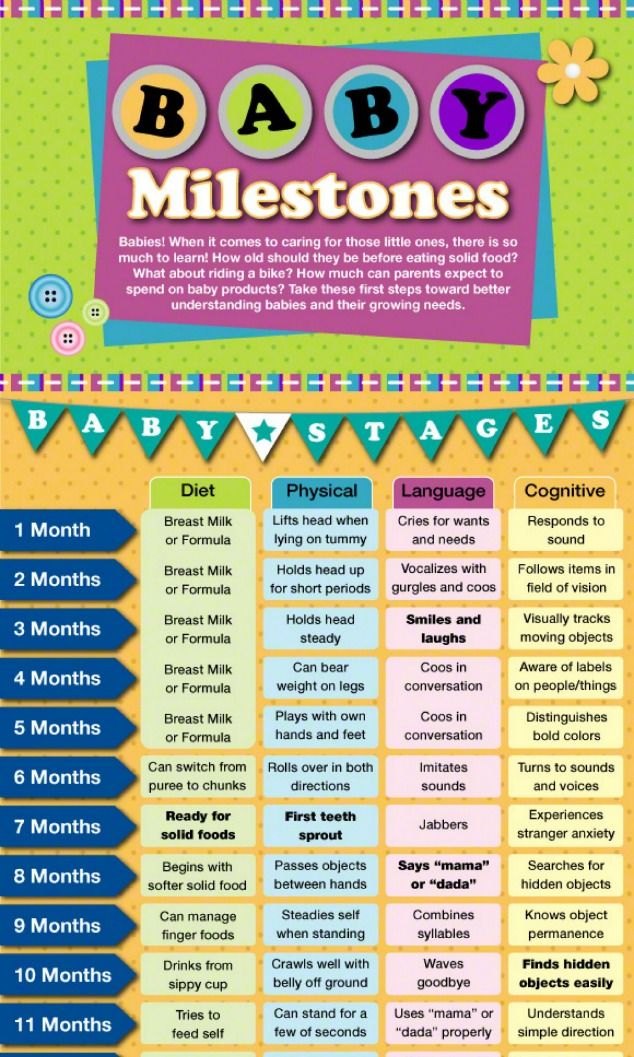 When your baby’s chin is tucked, it helps the narrowest part of their head go through the birth canal. Posterior presentation can mean a longer or potentially more difficult delivery, sometimes requiring a vacuum, forceps, or cesarean section.
When your baby’s chin is tucked, it helps the narrowest part of their head go through the birth canal. Posterior presentation can mean a longer or potentially more difficult delivery, sometimes requiring a vacuum, forceps, or cesarean section.
If your baby is posterior even in early labor, they may still turn throughout the process as contractions move them around in the womb. Some babies completely spin to an anterior position during labor while others are born posterior.
Related: What Your Baby’s Position in the Womb Means
You may not experience any signs that your baby has flipped into a head-down position. There’s really no easy way to tell just by looking at your bump. You need to get in there and feel around. But how?
Fortunately, your doctor or midwife is trained to feel for your baby’s position using what are called Leopold’s maneuvers.
With this technique, your provider will feel for what part of your baby is presenting in the pelvis, then for your baby’s back, and then for what part of your baby is in your fundus (up high, near your rib cage). They’ll also feel around for your baby’s cephalic prominence, which simply means which way your baby is facing.
They’ll also feel around for your baby’s cephalic prominence, which simply means which way your baby is facing.
With a head-down presentation:
- baby’s head would be in your pelvis
- baby’s back position would depend on whether baby is anterior/posterior, but generally baby will have either their back to your belly (anterior) or your back (posterior)
- baby’s bottom/legs would be in your fundus
All these findings can also be confirmed via ultrasound to give you the clearest picture.
But how can you figure out your baby’s position at home? Pay close attention to the shapes in your belly, as well as the different movements you feel.
Your baby may be head down if you can:
- feel their head low down in your belly
- feel their bottom or legs above your belly button
- feel larger movements — bottom or legs — higher up toward your rib cage
- feel smaller movements — hands or elbows — low down in your pelvis
- feel hiccups on the lower part of your belly, meaning that their chest is likely lower than their legs
- hear their heartbeat (using an at-home doppler or fetoscope) on the lower part of your belly, meaning that their chest is likely lower than their legs
Belly mapping
It can be difficult to read the different lumps and bumps you feel on your stomach. With practice, you may start to understand what you’re feeling. You might even try belly mapping — a process to estimate baby’s position. It was created by Gaily Tully, certified professional midwife and author of SpinningBabies.com.
With practice, you may start to understand what you’re feeling. You might even try belly mapping — a process to estimate baby’s position. It was created by Gaily Tully, certified professional midwife and author of SpinningBabies.com.
To use this technique, wait until you are at least 30 weeks pregnant. You may even want to try belly mapping following a prenatal appointment so your doctor can give you some guidance on baby’s position.
Lie down in bed or on the couch. Using a washable marker or finger paint, gently mark where you feel your baby’s head (it feels like a small bowling ball). The arms and hands are likely near the head, and their tiny movements give them away.
Then feel for the back, butt, and legs, as well as larger movements. You may find it helpful to use a baby doll to play with different possible positions. You can then lightly draw or paint your baby on your stomach to help you visualize how they’re lying.
Related: Can You Give Birth with Baby in the Vertex Position?
If you’re in late pregnancy and have concerns about your baby’s positioning, ask your doctor about it at your next prenatal appointment.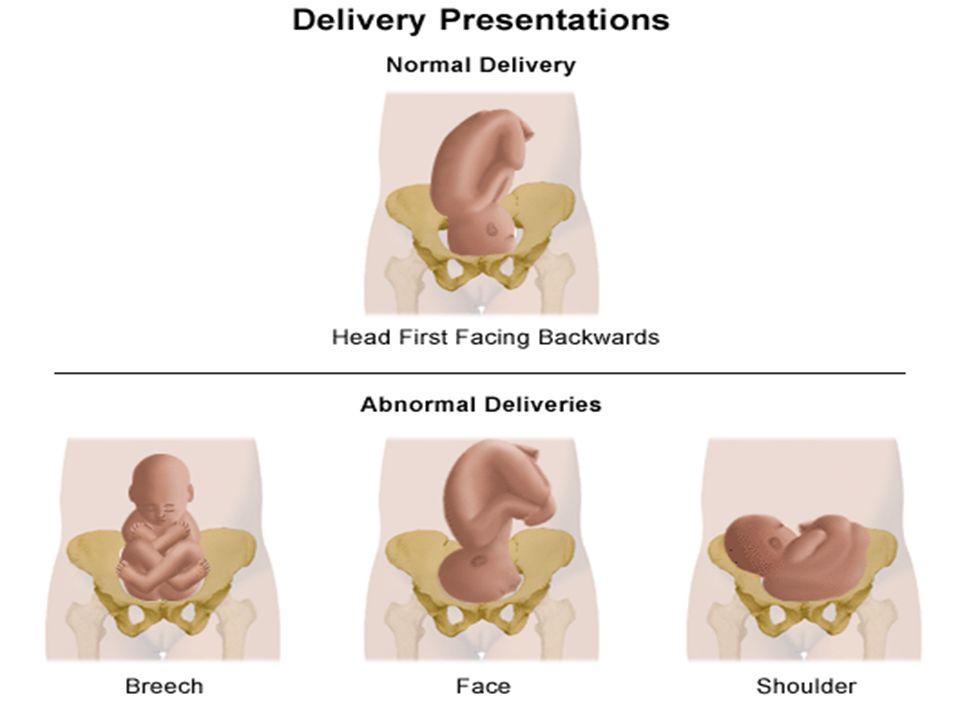 Chances are that your healthcare provider is making a note of your baby’s position as well.
Chances are that your healthcare provider is making a note of your baby’s position as well.
If your baby is breech or in some other position besides head down, there are several options for delivery. Factors at play here include:
- whether your baby stays in a certain position as you reach term
- any other pregnancy complications you might have
- when you end up going into labor naturally
Wait-and-see approach
Again, your baby’s position isn’t usually a big concern until you reach between 32 and 36 weeks in your pregnancy. Before that point, the fluid in the uterus gives your baby plenty of space to move around. As you get closer to delivery and your baby hasn’t settled head down, they start to run out of room to make the switch.
Your doctor can monitor your baby’s position at your prenatal appointments by feeling your belly for where their head, back, and buttocks are. To confirm, you may also have an ultrasound or pelvic exam.
External cephalic version (ECV)
External cephalic version (ECV) is a procedure during which your doctor tries to move your baby into a head-down position to increase the chance you’ll have a vaginal birth. This is done in a setting in which baby can be monitored and you can have an emergency cesarean section (C-section) if needed.
This is done in a setting in which baby can be monitored and you can have an emergency cesarean section (C-section) if needed.
Your provider uses their hands to manually turn the baby head down. If you’ve reached 36 weeks and your baby still isn’t head down, your doctor may suggest an ECV.
The success rate of this procedure is around 58 percent. While that’s not a super impressive statistic, ECV may be worth a try if delivering vaginally is important to you.
It’s also worth noting that some babies that are flipped return to a breech position. You can have a repeat ECV, but space runs out the closer you get to birth, so it may be more difficult the second time.
Cesarean delivery (C-section)
A C-section is another option for delivering babies who aren’t head down. It involves major surgery that you may schedule ahead of time (if you know your baby isn’t head down) or that can be performed in the event you go into labor naturally.
Around 85 percent of breech babies are born via C-section. While this surgery is routine, it involves some risks, including:
While this surgery is routine, it involves some risks, including:
- infection
- postpartum hemorrhage
- blood clots
- issues with future pregnancies, like a risk of placenta previa or uterine rupture
Vaginal birth
The American College of Obstetricians and Gynecologists explains that some women may be candidates for a vaginal birth even if their babies are breech. This possibility is determined on a case-by-case basis and involves a review of your medical history and weighing the benefits of vaginal delivery versus the risks of C-section.
If you choose to go this route, you’ll need to follow any specific guidelines set up by your hospital or birth center.
Related: Midwives Are Growing in Popularity: Here’s What You Need to Know
Your baby moves a lot throughout your pregnancy. As you get closer to your due date, they’ll likely settle into a head-down position as they get ready for birth.
If you have concerns about your baby’s position, don’t hesitate to bring them up at your next prenatal appointment. Your healthcare provider is also keeping tabs on whether baby is head down and can help guide you with options for repositioning or an alternate birth plan, if necessary. You’ve got this, mama!
Your healthcare provider is also keeping tabs on whether baby is head down and can help guide you with options for repositioning or an alternate birth plan, if necessary. You’ve got this, mama!
Breech presentation - how to turn the baby
Vatagina Maria Alexandrovna
Obstetrician-gynecologist
Lapino-1 Clinical Hospital "Mother and Child"
Do not worry and worry if a child under 36 weeks is "ass forward": this is completely normal and the crumbs still have time to roll over. By the way, it happens that the baby turns upside down and immediately before the birth, and even in the birth itself
Try to get the baby to turn into the desired position. Tell everything in detail: why he should turn around, what it will give both mother and child in childbirth. You can talk out loud, or you can talk to yourself, the main thing is to talk to the baby about it all the time
In the water, the mother’s body relaxes, which means that the muscles of the uterus relax, its volume increases somewhat, and as a result, the child has a little more space “for maneuvers ".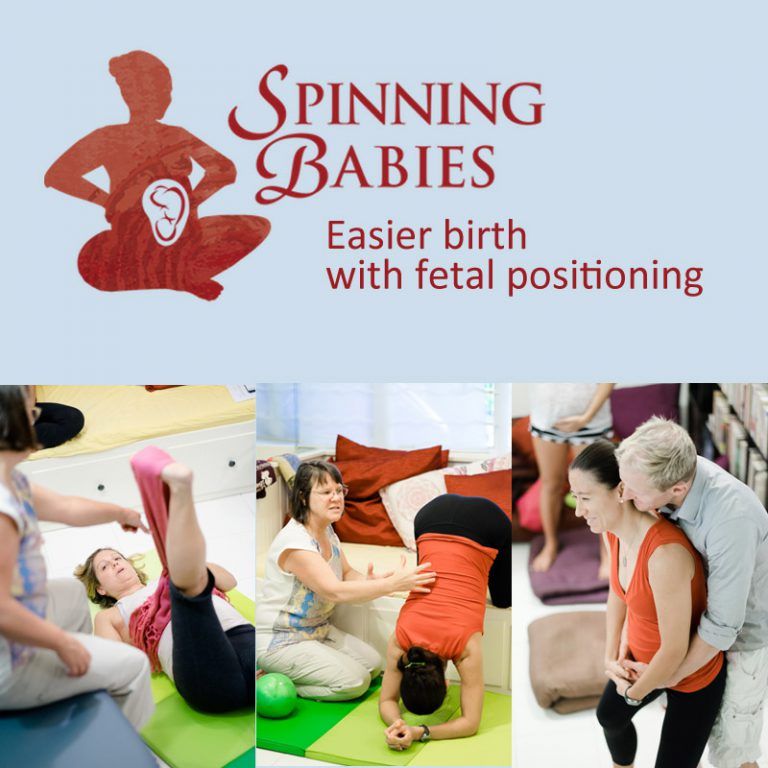
Talk to him
There is always a connection between a child and a mother. And mother is the first person whom the baby believes and obeys. Therefore, try to persuade the baby to turn into the desired position. Tell everything in detail: why he should turn around, what it will give both mother and child in childbirth. You can talk out loud, or you can talk to yourself, the main thing is to talk to your baby about it all the time. Be gentle and at the same time persistent. Be sure to connect the future dad to the conversation, children obey men even more. When you persuade the baby, additionally stroke the stomach, as if instructing the child how to turn around. Great option: dad talks and strokes his stomach with you.
Imagine
Visualization is a way in which a person imagines a picture he needs. So the expectant mother just needs to imagine the baby in the right position. If you don't know what it looks like or you just can't imagine a baby in your belly - find a beautiful photo from a magazine, book, Internet.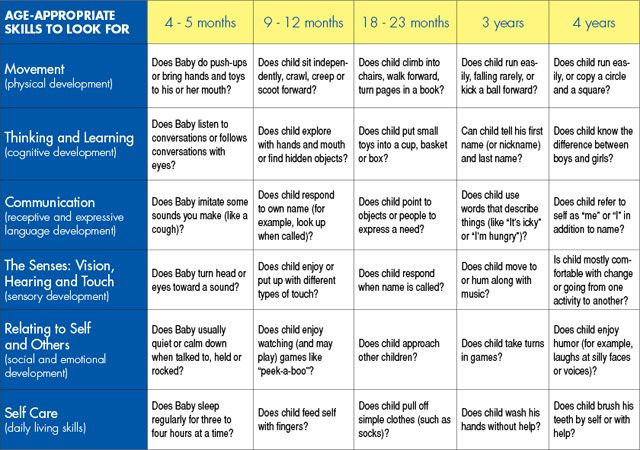 Some kind of anatomical accuracy is not important here, just a pleasant and understandable picture is enough: the baby lies upside down inside the mother's belly. Look at the illustration more often and imagine that inside you the baby is also in the correct position. But you must not only look at someone else's photo, but imagine yourself and your child.
Some kind of anatomical accuracy is not important here, just a pleasant and understandable picture is enough: the baby lies upside down inside the mother's belly. Look at the illustration more often and imagine that inside you the baby is also in the correct position. But you must not only look at someone else's photo, but imagine yourself and your child.
Lure him
Another way is to lure the baby. Children, especially small ones, are very curious, so make the baby turn around by showing him something interesting. But the baby is still in the stomach, how can he see something? We do not know exactly how the baby reacts to the world outside the mother's stomach, but it is believed that he, for example, can hear sounds. Place headphones with pleasant music in the lower abdomen, this can also encourage the child to turn towards the sound. Music should be calm, melodic and not loud so that the baby is not scared.
You can also turn on the flashlight and put it against the mother's stomach in the place where the baby's head is, and then, while talking, slowly move the flashlight to the side and down, dragging the baby along with you.
Swim and relax
Swimming also helps your baby get into head presentation. In the water, the mother’s body relaxes, which means that the muscles of the uterus also relax, its volume increases somewhat, and as a result, the child has a little more space “for maneuvers”. But swimming should be pleasant for mom, if a woman is afraid of water or she is not warm enough, then there will be no relaxation. Therefore, you must want to swim, plus the water must be at a comfortable temperature.
Do the exercises
There are very simple exercises , that will help the baby to fit correctly. But first, check with your doctor if you can do such exercises. Gymnastics to turn the baby into head presentation is not carried out if there is gestosis, the threat of termination of pregnancy, a scar on the uterus after a previous cesarean section, placenta previa.
Turns. Lying on the couch, turn from side to side 3-4 times in 10 minutes. Perform 3 times a day. The turn usually occurs within the first week.
Perform 3 times a day. The turn usually occurs within the first week.
Force of attraction. Lie on your back with a large pillow under your lower back and a small one under your head. Bend your knees, placing your feet on the floor. Lie like this for 10 minutes.
Knee-elbow position. Stand on your knees and elbows, at this time the pelvis is located above the head. Stay in this position for 15 minutes several times a day.
Consult a specialist
If exercises and psychological methods do not work, there is another way – prophylactic external rotation performed by an experienced obstetrician-gynecologist in the maternity hospital. First, the mother is injected with drugs that relax the uterus, then the doctor tries to turn the child with certain hand movements, acting on his head and pelvis through the belly of the expectant mother. All this takes place under the control of ultrasound, and usually a woman does not experience any discomfort during this manipulation.
True, external rotation is now rarely performed: firstly, not all obstetricians and gynecologists can do it, and not all doctors believe that it is needed; secondly, not every woman is psychologically tuned in to him, and, besides, there are not always indications for him.
Psychological methods may seem questionable, but they often help. And if you add gymnastics and swimming, then the likelihood that the baby will turn into the correct position only increases. So if you don’t want to do a cesarean section with a breech presentation or give birth “ass first”, then you should try all the methods that are suitable and allowed for you.
Make an appointment
to the doctor - Vatagina Maria Aleksandrovna
Lapino-1 Clinical Hospital "Mother and Child"
Gynecology
By clicking on the submit button, I consent to the processing of personal data
At what age does a child begin to hold his head, crawl and walk: a detailed guide to the development of motor skills in children
Parents carefully monitor every movement of their child.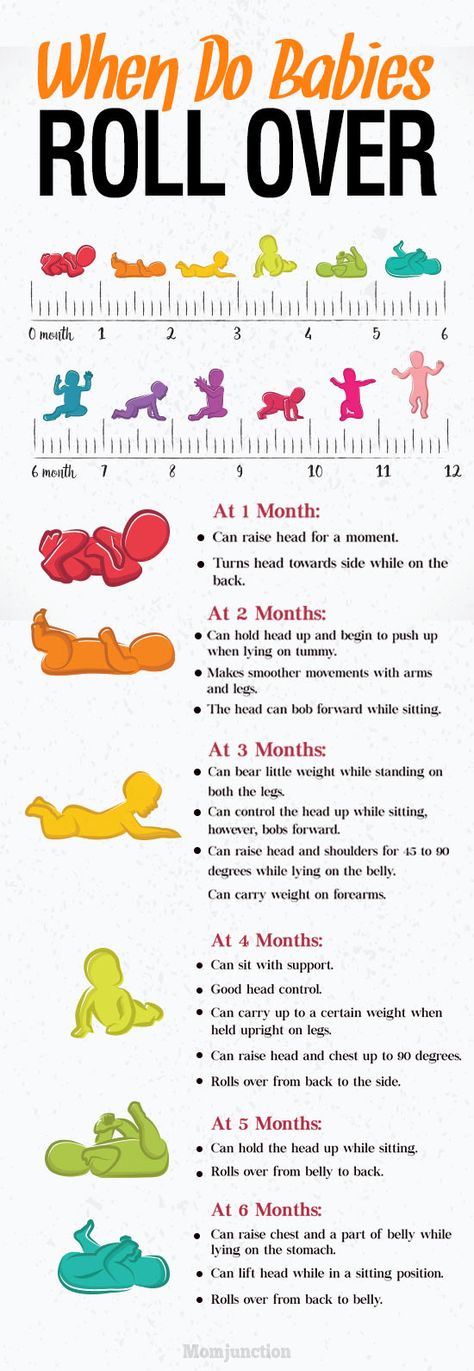 He is already a month old, and he does not hold his head. Is it normal? Sits only from all fours. So it is possible? And if you don’t go before a year, is everything bad? Together with orthopedist Elena Adulas, we have compiled a guide on the motor skills of children under one year old. And we found out what parents should pay attention to.
He is already a month old, and he does not hold his head. Is it normal? Sits only from all fours. So it is possible? And if you don’t go before a year, is everything bad? Together with orthopedist Elena Adulas, we have compiled a guide on the motor skills of children under one year old. And we found out what parents should pay attention to.
Motor ontogeny: what it is
The process of successive transition of an infant from a horizontal to a vertical position is called motor ontogeny. It lasts the entire first year of a child's life.
During this period, the anti-gravity muscles are sequentially included in the work - those that are located along the spine and hold it. These muscles should stabilize the center of the body, the main axis on which the head, spine, and pelvis are located. At all stages of the development of the child, the axis must maintain its stability.
First, the deep axial muscles develop, and then the peripheral ones, which are responsible for the coordinated work of the arms and legs, are already turned on.
Holds and turns head: 1–1.5 months
Photo: shutterstock / LevraniiDevelopment up to a year goes from head to feet. Without learning to hold the head, the child will not be able to learn to sit. Usually, children begin to hold their heads well in a month and a half. For some it happens earlier. Even if you take a newborn baby in your arms, his deep neck muscles will already begin to work. Lying on his back or on his stomach, the baby bends his head and makes a small “nod” with it, including deep postural muscles. If the head does not hold at all, falls - this is an alarming sign.
Usually, in a child up to a month old, the head is turned in one direction - in the direction it was tilted when it was in the womb
to the left.
Things to watch out for: if the baby only looks in one direction, this is cause for concern. The reason can be either an orthopedic problem like congenital muscular torticollis, or the habit of looking constantly in one direction, because there is a light source there or it is from this side that parents approach.
Lies on his side and back, raises his arms and legs: by 3 months
Photo: shutterstock / StoryTime StudioPreviously, neurologists and massage schools did not pay attention to the skill of lying on one side. Only recently, with the advent of specialists in motor development and motor ontogeny, has the importance of posture begun to become clear. Usually, children lie on their backs, and then immediately turn over on their stomachs, and the period on their side passes in passing, although it is important for the child to gradually reduce the area of support. From the “lying on its side” position, a healthy child raises his head and turns his face to the surface of the couch, thereby strengthening the neck muscles.
By three months, babies show the first results of overcoming the forces of gravity: they lie on their backs, raising their legs, bent at the hip and knee joints at an angle of 90 degrees, and stretch their arms up. The baby can control the limbs, connect the hands in front of the eyes along the midline and pull them into the mouth.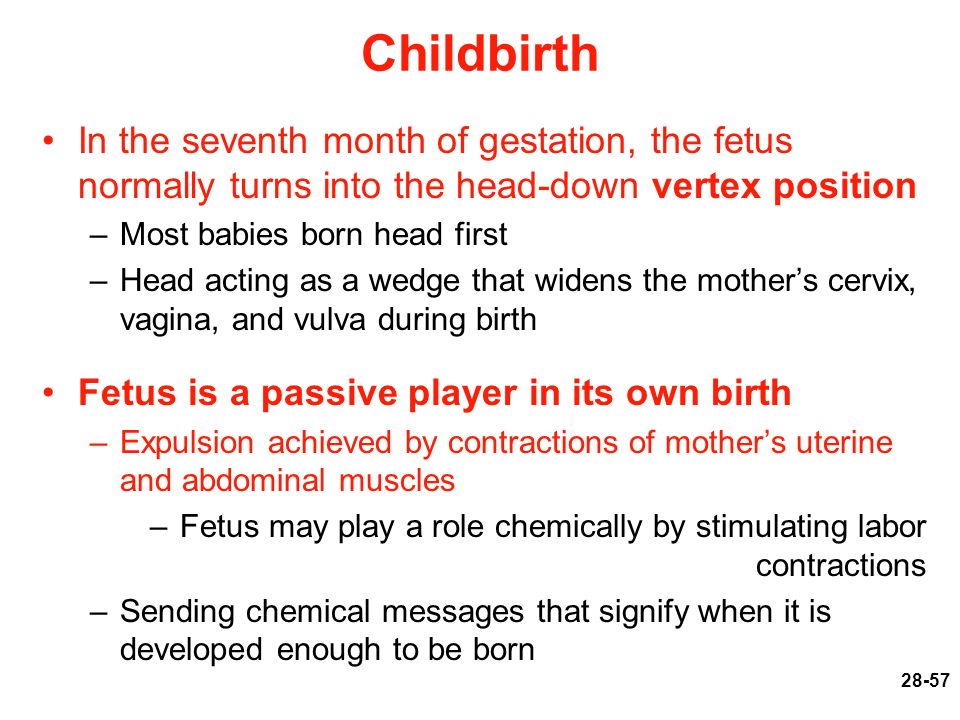 During this period of life, children should hold the “lying on their back with legs up” position for a long time, they should be comfortable in this position.
During this period of life, children should hold the “lying on their back with legs up” position for a long time, they should be comfortable in this position.
Rolls onto stomach: 3-6 months
Photo: shutterstock / tartanpartyAll specialists in motor ontogeny have different ideas about when a child should roll over on his stomach for the first time. Usually they indicate 5-6 months, but now children do it earlier. Many master this skill in 4 and even 3.5 months. Often this is due to specialists who actively encourage children to turn on their stomachs. As a result, babies skip the phase of the “on the side” position, which is necessary for the successful development of crawling and other motor skills in the future.
Things to watch out for: adults often incorrectly help babies roll over. They take the child by the leg, throw it over the other and turn sharply. As a result, an incorrect rollover mechanism is formed, through extension, rather than flexion of the head. With the help of these exercises, the baby will not learn to roll over on his stomach in a correct, natural way.
With the help of these exercises, the baby will not learn to roll over on his stomach in a correct, natural way.
Learns to recline and crawl: 7-8 months
The amphibian or recline position (the child sits sideways with his hands on the surface) is very important for the child. This is an intermediate position: having mastered it, the baby will sit up straight, with a straight spine. And later he will get up on all fours from it. Around the same period, children grab their legs with their hands and pull them into their mouths. Before getting on all fours, the child learns to crawl in a plastunsky way. He lies on his stomach and alternately moves his limbs - and so he moves. Plast crawling is also an intermediate stage, which normally should not last longer than 2-3 months.
Things to watch out for: is not good when the baby crawls asymmetrically. Moves by moving the leg and arm on one side only. This suggests that not everything in motor development is going right.
Sitting upright and crawling on all fours: 8–9.5 months
Photo: shutterstock / shurkin_sonFrom the reclined sitting position, the infant transitions to the all fours position. Some begin to crawl at seven months, but it is perfectly normal if this happens a little later, by 8-9.5 months.
The child acquires the ability to sit when the anti-gravity muscles of the body are ready for it. It is not the fact that he is sitting that is important, it is necessary that he does it correctly. Either from the “reclined seat” position, or from the position on all fours, through the side.
What to look for: if the child rises forward from the position on the back due to the neck and the press - bending the head and contracting the abdominal muscles - this is wrong. This is a violation of the correct biomechanics of sitting down. The child should not sit on the sacrum, but on the buttocks. The back should not be rounded.
Raising with support: 9-11 months
Photo: shutterstock / Livchak Vera Before walking on their own, children first move into a kneeling position and then stand up holding on to a support. From a standing position, the baby periodically squats. This is how he trains his legs.
From a standing position, the baby periodically squats. This is how he trains his legs.
Things to watch out for: in the initial stages of verticalization, the child's pelvis may be unstable, especially in children who have missed the crawling period or who crawl little. In this case, special exercises to strengthen the deep muscles of the spine are useful. For example, on fitball.
Walking: 12-16 months
Photo: shutterstock / Olesia BilkeiSome children start walking at 10 months, some at one year. If the child begins to walk before 16 months, this is considered normal.
How quickly and successfully a child learns to walk depends on the previous stages of development and on the general tone of the body. Some children need more time for the muscles to get stronger. Walking also depends on the character: timid, indecisive children can be afraid to move without a parent's hand. Do not speed up the process: everything has its time.
Some parents keep their baby upright under their armpits almost from 2-3 months, dancing and imitating walking. This is called early verticalization, and modern orthopedists and neurologists oppose such procedures.
This is called early verticalization, and modern orthopedists and neurologists oppose such procedures.
Too much use of walkers and jumpers is also not very useful
What to look for: it is important for parents to give their child freedom of movement in the first stages of walking. Do not lead him by the hands, do not use special support reins or tolokar. If you do this, the child will begin to walk due to superficial rather than deep muscles. And for a full-fledged, healthy walking, it is necessary that deep muscles are involved in this process.
Does a child up to a year need movement exercises?
The stages of motor development succeed each other in a natural way, and in general, it is not necessary to help nature by trying to speed up these processes. However, if parents see some violations or even radical deviations from the norm, you need to consult a specialist. Perhaps you can help him with the help of gymnastics, the right exercises. Focus on the child, trust his body: it knows when it's time to crawl, sit down and go.



